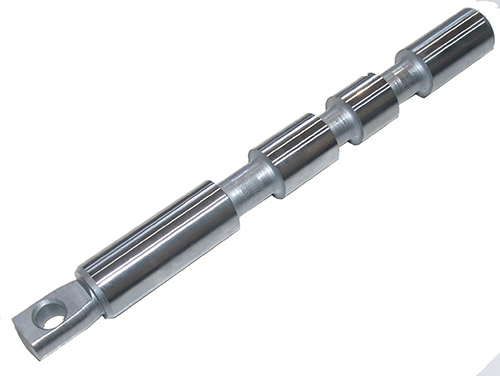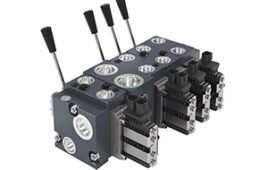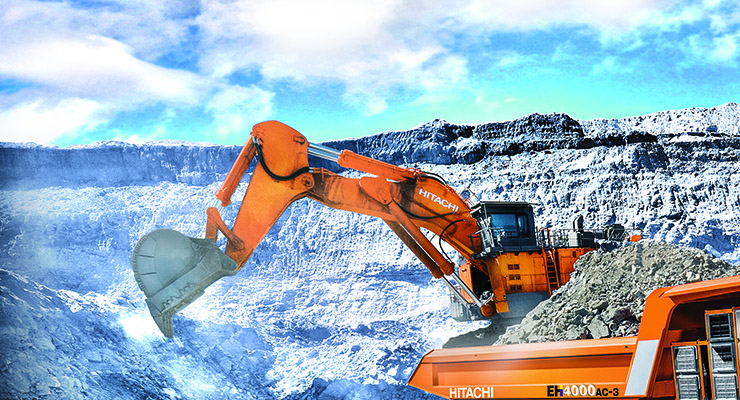If you’ve been around the hydraulic world for a while, you’ll have noticed there is a price discrepancy between various component manufacturers. Whether there is a correlation between price and quality is a discussion unto itself, but regardless, you can’t argue the price range is vast. Let’s assume for this missive that higher priced components are higher quality. So what makes a high quality hydraulic component?
I feel it’s probably best choose an example easy to explain, so I’ll go with ISO type solenoid valves. These valves consist of machined and grooved steel spools, which slide within a body of either cast or machined steel. Mounted to either side of the of the body is a core tube, which has spring loaded pins that push on the spool when the coil—mounted over the core tube—has electric current provided to it.
I’m going to give you a quick lesson on machining to explain what goes into making the two machined components, the spool and the body. Starting with the steel quality, it makes sense that higher quality alloy steel is more expensive than cast or ductile iron. High quality forged steel has higher tensile strength, better grain structure and yields better surface finish when machined properly. Inexpensive spools are made from cast steel and then machined and ground to provide the desired shape and finish. High quality spools are made from forged cold rolled steel and every detail is machined into the spool and finely ground and polished to provide exact external dimensions.
When machined parts are made, the CNC machinists are given drawings with tolerances to adhere to. This tolerance describe how far from perfect the part can be made and still be acceptable. For example, if the OD of the machined spool is supposed to be 0.750” +.001” -.004”, it must be machined ¾ of an inch, and no more than 1 thousandth bigger or 4 thousandth smaller. Anything bigger or smaller than this is a non-conforming part and needs to be modified or scrapped. The smaller the tolerance, the more difficult it is for the machinist to maintain these tolerances.
The limitations to machining components could be in the tooling used to cut metal, the precision and quality of the machine itself or the experience of the machinist doing the work. Higher quality tooling able to machine more accurately with a better finish and less tool wear is obviously more expensive. So, too, is a CNC machine able to maintain machining tolerances as it ages; quality comes at a cost. And if the CNC machinist isn’t experienced enough to properly setup tooling, run the machine or compensate for tool wear, the parts cannot be made to spec.
If the quality of the tooling, machine or machinist is not exceptional, you can still make parts and build your valves. However, it is likely that the tolerances will be loosened up to allow for inaccuracies, and that same spool designed to be 0.750” will be anywhere from 0.752” to 0.745”.
With looser tolerance in the spool, you must also have looser tolerance in the body. If the body ID is designed to be 0.753” with a tolerance of +.005” -.002”, we can see there is supposed to be 3 thousandths clearance between the spool and body.
However, if you do the math, if the spool is made to 0.752” (+.002”) and the body is made to 0.751” (-.002”), it becomes obvious the spool won’t even fit in the body. They must reject that part or use the spool with a body that was made over tolerance. Picking two components and going the other way dimensionally, you could get a spool made at 0.745” (-.005”) and a body made at 0.758” (+.005”), giving you a combined clearance of 10 thou over the ideal 3 thou.
Obviously, the valve would go together easily, but would leak like a basket. The machining accuracy, as well as the quality of steel, must be spot-on to provide the highest quality product with the least internal leakage possible, and this combination adds cost to manufacturing.
The same type of manufacturing and machining considerations can be made to the core tube assembly of the solenoid valve. The tube is sealed on the outside, but the ID contains a ferrous pin that moves when subjected to the magnetic field of the coil. If the machining tolerances of the tube ID and pin OD are not accurate, you experience the same problems as the spool and body. I’ve seen examples where a solenoid valve does not shift because the pin is stuck in the core tube.
Finally, the quality of the coil assembly makes a difference, as well. The number of windings to create the coil are important to achieve desired coil performance, and the nature of its construction ensure it can stay shifted as long as needed or as many times as possible. The quality of the coil case plays a role in maintaining the coil at a safe temperature. If the case quality is poor, the valve has a reduced duty cycle, and risks burning up with extended use. The type of wiring insulation and connection also affects solenoid lifespan, because advanced synthetic insulation prevents shorts better than older technology like resin or rubber.
All of these factors, when considered intelligently, add up to make a quality hydraulic valve. The same considerations are made for pumps, cylinders or other hydraulic components. In the end, your component will perform well with rapid response and little internal leakage. As well, it will be reliable and safe when quality is put first. There is one caveat to quality, of course—and it’s that it costs more.
Filed Under: Mobile Hydraulic Tips




